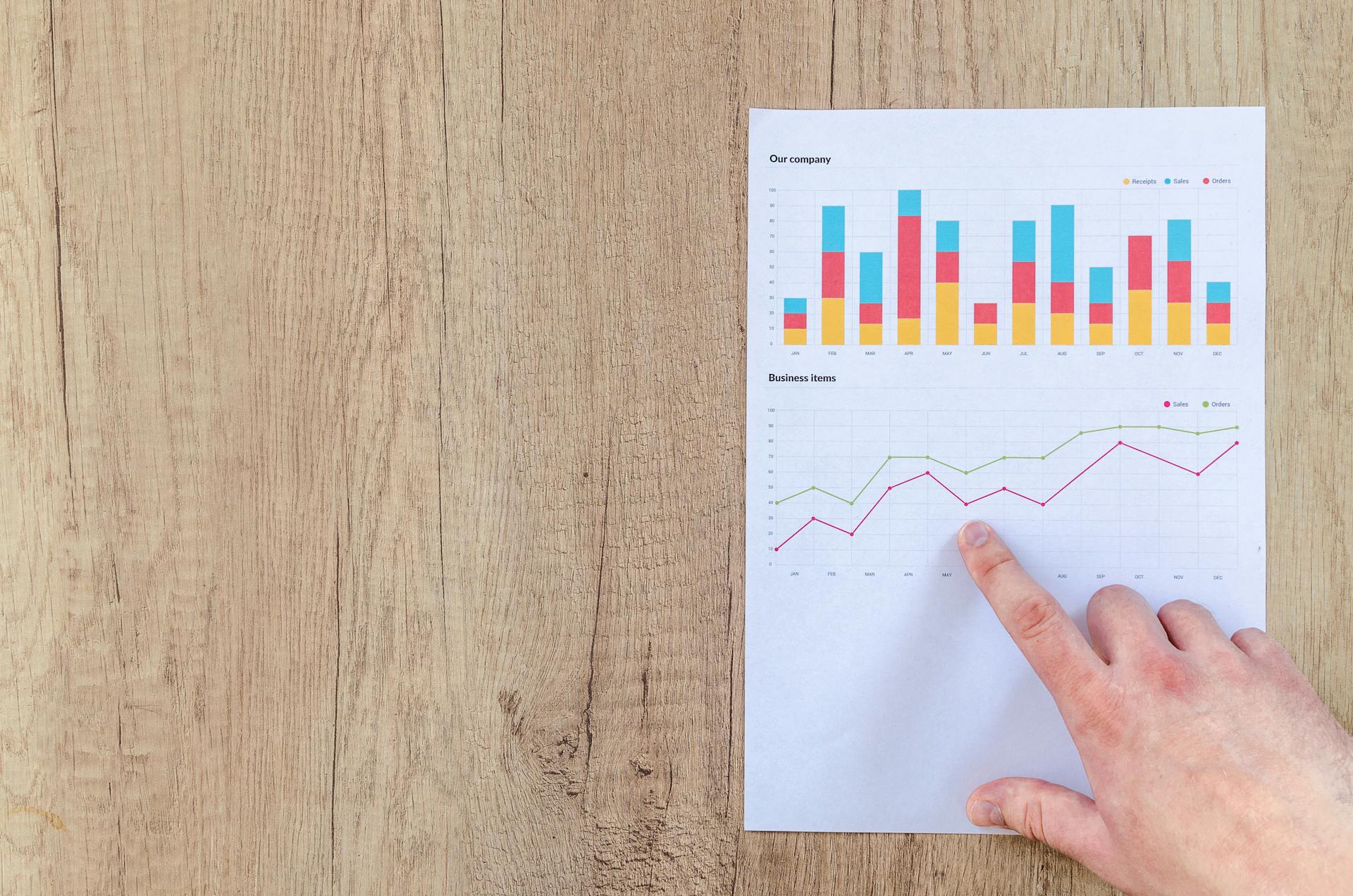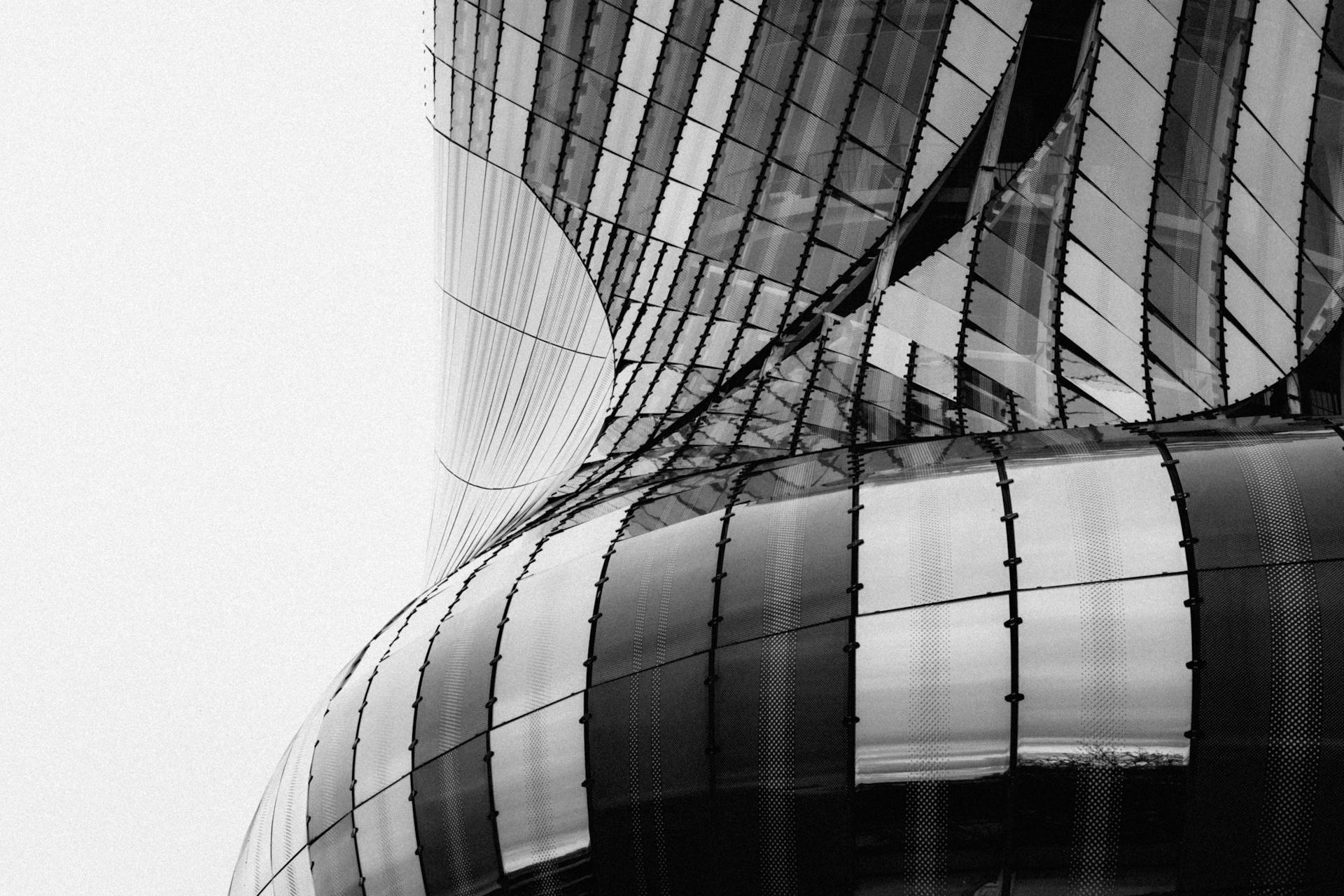
An inverted yield curve is a rare economic phenomenon where short-term interest rates are higher than long-term interest rates. This usually happens when investors are nervous about the economy and demand more money for loans, causing short-term rates to rise.
The inversion of the yield curve is often seen as a warning sign for an impending recession. A study found that every recession since the 1950s was preceded by an inverted yield curve.
Investors who have seen a yield curve inversion in the past know that it can be a sign of trouble ahead. In 2006, the yield curve inverted, and the economy went into recession just two years later.
The inverted yield curve is a signal to investors to be cautious, but it's not a guarantee of a recession.
You might enjoy: Look at the below Yield Curve Inversion Chart
Causes and Significance
An inverted yield curve can be a sign that investors expect lower interest rates in the future. This is because investors who value interest income expect recession, and they try to lock in long-term yields to protect their income stream.
You might enjoy: Agriculture Angel Investors
The expectations theory suggests that long-term rates are a reflection of expected future short-term rates, which reflect expectations about future economic conditions and monetary policy.
Investors use the spread between the yields on 10-year and two-year U.S. Treasury bonds as a relatively reliable leading indicator of a recession.
A focus on shorter-term maturities is more informative about the likelihood of a recession, according to some Federal Reserve officials.
Federal Reserve Chair Jerome Powell prefers to gauge recession risk by focusing on the difference between the current three-month Treasury bill rate and the market pricing of derivatives predicting the same rate 18 months later.
Suggestion: Federal Reserve System
Understanding the Curve
An inverted yield curve is a graphical representation of yields on similar bonds across various maturities, also known as the term structure of interest rates. The U.S. Treasury publishes daily Treasury bill and bond yields that can be charted as a curve.
Analysts often focus on a spread between two maturities to simplify the task of interpreting a yield curve. However, there's no general agreement on which spread serves as the most reliable recession indicator.
Take a look at this: Mortgage Rates Treasury Yields Spike
A yield curve inverts when long-term interest rates drop below short-term rates, indicating investors are moving money away from short-term bonds into long-term ones. This suggests the market is becoming more pessimistic about the near future.
An inverted Treasury yield curve has proven to be one of the most reliable leading indicators of a recession in the past. Historically, protracted inversions of the yield curve have preceded recessions in the U.S.
Consider reading: Short Trading Term Definitions
Historical and Global Context
Inverted yield curves have been a global phenomenon, affecting various countries at different times. The German economy experienced an inverted yield curve in 2008, a year marked by the European sovereign debt crisis.
The UK, Canada, and Ireland have also seen inverted yield curves. In the UK, the curve inverted in the 2010s, while in Canada, it occurred in 2008. Ireland's bond prices showed an inverted yield curve in 2011, during the European debt crisis.
In some cases, inverted yield curves have led to negative interest rates. For example, Portugal's 30-year bond had negative interest rates from 2014 to 2022. Similarly, the UK's 1-month bond had negative interest rates during the same period.
Here are some key years when inverted yield curves occurred in various countries:
Historical Examples
The 10-year to two-year Treasury spread has been a generally reliable recession indicator since providing a false positive in the mid-1960s.
In 1998, the 10-year/two-year spread briefly inverted after the Russian debt default, and quick interest rate cuts by the Federal Reserve helped avert a U.S. recession.
The spread inverted for much of 2006, and long-term Treasury bonds went on to outperform stocks during 2007, which was the year the Great Recession began in December.
On Aug. 28, 2019, the 10-year/two-year spread briefly went negative, and the U.S. economy suffered a two-month recession in February and March of 2020 amid the COVID-19 pandemic.
While an inverted yield curve has often preceded recessions in recent decades, it does not cause them.
Outside the US
Outside the US, the story of inverted yield curves is just as complex and fascinating. In Germany, for example, an inverted yield curve appeared in 2008, and since 2014, interest rates have been negative, a trend that continues to this day.

In the UK, the picture is similar, with an inverted yield curve observed in the past, and interest rates that have gone negative in some maturities. For instance, in 2011, the UK experienced an inverted yield curve, and after the European debt crisis, rates went negative.
In Canada, the story is a bit different, but the presence of inverted yield curves is still notable. In 2008, Canada experienced an inverted yield curve, and since then, interest rates have fluctuated.
Here are some key statistics on inverted yield curves outside the US:
In Portugal, an inverted yield curve was observed during the European sovereign debt crisis, and interest rates went negative. Similarly, in Ireland, an inverted yield curve appeared in 2011, and after the European debt crisis, rates went negative.
In Russia, an inverted yield curve was used to tame inflation during their wars, and interest rates have been negative in some maturities. In Sri Lanka, an inverted yield curve was observed in 2022, and interest rates spiked during the economic crisis. In Brazil, an inverted yield curve started in August 2014, and in Iceland, an inverted yield curve was observed in 2008 during the financial crisis.
A unique perspective: Negative Yield to Maturity
What Investors Should Know
An inverted yield curve is a strong indication that investors collectively see more risk in the immediate future than down the road.
The yield curve inverts when long-term interest rates drop below short-term rates, indicating that investors are moving money away from short-term bonds and into long-term ones.
This typically happens when investors become more pessimistic about the economic prospects for the near future, which has served as a relatively reliable recession indicator in the modern era.
An inverted Treasury yield curve has proven in the past to be one of the most reliable leading indicators of a recession, making it a warning sign for investors.
Bonds with longer maturities typically need to pay higher interest rates to compensate investors for the additional risks that come with owning these fixed-income assets over time.
However, the last two economic cycles have been anything but typical, and yield curves can flatten for a multitude of reasons that aren't a reflection of investor views about slowing growth.
Investors should be aware that a narrowing of the inverted yield curve, as seen in December 2023, might indicate that investors are confident that rocketing inflation has been brought under control and that normality will be restored.
Intriguing read: Angel Investors for Small Business
Forecasting and Predictions
An inverted yield curve is a strong indication that investors collectively see more risk in the immediate future than down the road.
Central banks often counter deflationary pressures in the economy by reducing short-term interest rates, implying that an expectation of economic slowdown is consistent with a negatively sloped yield curve.
Lower returns lead to a decrease in investments that is associated with economic stagnation and deflation, making it a reliable leading indicator of a recession.
In the past, an inverted yield curve has served as a relatively reliable recession indicator in the modern era, drawing heavy scrutiny from financial market participants.
An inverted Treasury yield curve has proven to be one of the most reliable leading indicators of a recession, making it a crucial tool for forecasting and predictions.
Investors moving money away from short-term bonds and into long-term ones suggests that the market as a whole is becoming more pessimistic about the economic prospects for the near future.
This inversion has often preceded recessions, making it a notable and significant event in the financial markets.
Discover more: Canadian Currency Short Form
Business and Economic Cycles
Business and Economic Cycles are closely tied to the inverted yield curve. The contraction phase of the Business cycle or Credit cycle occurs when the federal funds rate and treasury interest rates are high to create a hard or soft landing.
The Federal Reserve tries to control the economy by manipulating interest rates with the Federal funds rate and Repurchase agreement. This is done to control how much new money banks create.
The Fed only indirectly controls the money supply. It's the banks themselves that create new money when they make loans in a Debt based monetary system.
After the economic contraction, the Federal Reserve lowers the federal funds rate and interest rates to get price and commodity stabilization. This marks the growth and expansion phase in the business cycle.
Readers also liked: Federal Takeover of Fannie Mae and Freddie Mac
Frequently Asked Questions
Is the yield curve inverted in 2024?
No, the yield curve is not inverted in 2024, as yields on 2-year Treasuries have fallen below those of 10-year Treasuries. This change occurred earlier in 2024, ending the inversion between those two maturities.
What is the longest the yield curve has been inverted?
The longest inversion of the U.S. yield curve lasted 793 days. This record-breaking inversion has now been broken as the yield curve has returned to positive territory.
How does an inverted yield curve affect real estate?
An inverted yield curve can signal a potential recession, which may lead to reduced demand and lower property values in the real estate market. If a recession occurs, it could impact mortgage rates, making it more expensive for buyers and potentially slowing down the housing market.
How long after yield curve inversion recession?
After a U.S. yield curve inversion, a recession typically occurs within 12 months, based on historical data over the past five decades. This timeline has been consistent, with an average of 12 months passing before a recession sets in.
What is the spread on 10 yr and 2 yr?
The 10-2 Treasury Yield Spread is currently at 0.31%, a decrease from last year's -0.42% and lower than the long-term average of 0.86%. This spread represents the difference between the 10-year and 2-year treasury rates.
Sources
- https://corporatefinanceinstitute.com/resources/fixed-income/inverted-yield-curve/
- https://www.investopedia.com/terms/i/invertedyieldcurve.asp
- https://en.wikipedia.org/wiki/Inverted_yield_curve
- https://www.forbes.com/sites/simonmoore/2024/02/06/the-inverted-yield-curve-continues-to-flash-a-recession-warning/
- https://www.morganstanley.com/ideas/inverted-yield-curve-recession-outlook
Featured Images: pexels.com


